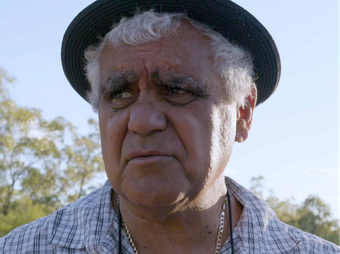I often characterise Australia as a place with rotten foundations that's culturally not yet arrived - at a point of being able to address that rot.
My name is Helen Johnson I'm an artist and a teacher. I've been concerned with addressing questions around Australian history and ideas of national identity and how they connect to an individual sense of self.
I feel like Australia culturally now is still very much tied to colonialism. I hesitate to even claim that you could say that we're in a post-colonial context in this country because I feel like the process of colonisation is still going on.
It's a big and complex question to talk about how you might address colonial histories and legacies through art as a white person in this country; and I don't see my work as an answer to that question.
Humour is something that I try to intentionally insert. I feel like humour is one of the most powerful tools that an artist can employ. It's inviting you to think about a particular set of things like in the painting called A Feast of Reason and a Flow of Soul (2016) you see all these of official figures in their suits and top hats and finery you can sort of make up their intestinal traps underneath their clothes and you can see that they're all busting for a shit.
The fact that people can have a laugh at these guys shitting themselves doesn't mean that they're not going to question what was being done at the time. If you can draw someone in by making them laugh about something, then you've got their attention and they can start to follow a trajectory of thought.
I use a number of different mediums. I'm really interested in creating sort of moments of push and pull in paintings and having different registers of imagery with different surface qualities. [Impotent Imposter (2016)]
So one thing might be compositionally in the foreground but materially might be being subsumed by what's behind it the fact that some of the images in the works are more prominent and others are more discrete or they take longer to emerge is largely to do with thinking about the ways in which history gets constructed and that there are certain things that always get privileged and other things that are pushed to the side or to the background.
The painting called Seat of Power is to do with the process of producing a replica of the speaker's chair that's in the Australian Parliament and there's a text that is quite a dominant presence in that painting which describes in this really fetishistic language the process of producing this replica. It seemed to me like it encapsulated this sort of sycophantic relationship that Australia continues to have to Britain on some levels particularly on political levels
There's overlaid on that text in the painting like a satirical cartoon that shows the House of Commons in session and it's full of people snoozing and drinking booze and just clowning around and it's it just kind of totally pokes fun at the integrity of British politicians so I thought it was sort of just nice to put those two attitudes towards the same thing in relation with one another that are quite contradictory.
[Bad Debt (2016)]Usually I'll start with a host of images orbiting around one another and it's a process of figuring out what their relations might be between things that will draw something interesting out.
I think it's quite important to leave space for unexpected things to occur and to be willing to be open when that happens. I feel like the process of painting is a meeting of conscious decisions you make and unconscious processes and that they weave together in the work.
It's never been about trying to present a clean narrative. I think it's a point of frustration for a lot of people in this country that the state likes to present this sanitised narrative of colonisation that's completely disingenuous and I think art can be one means of prodding at that.



